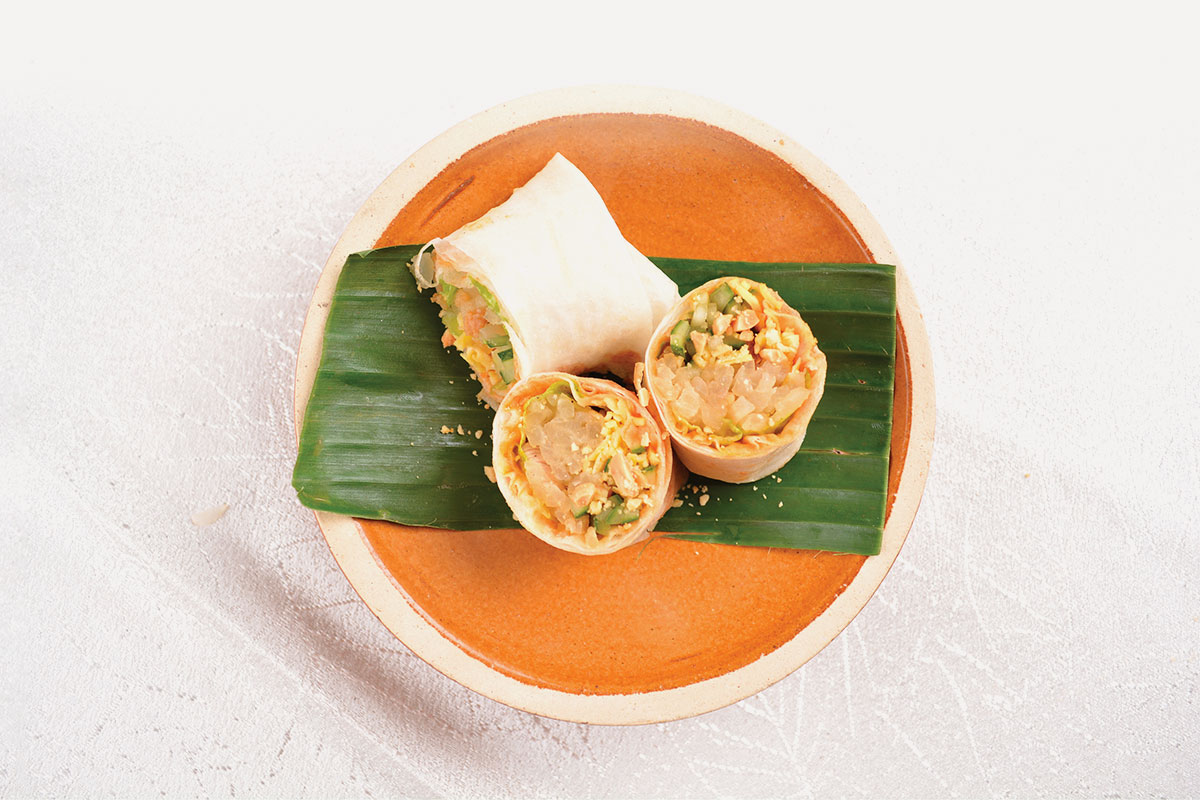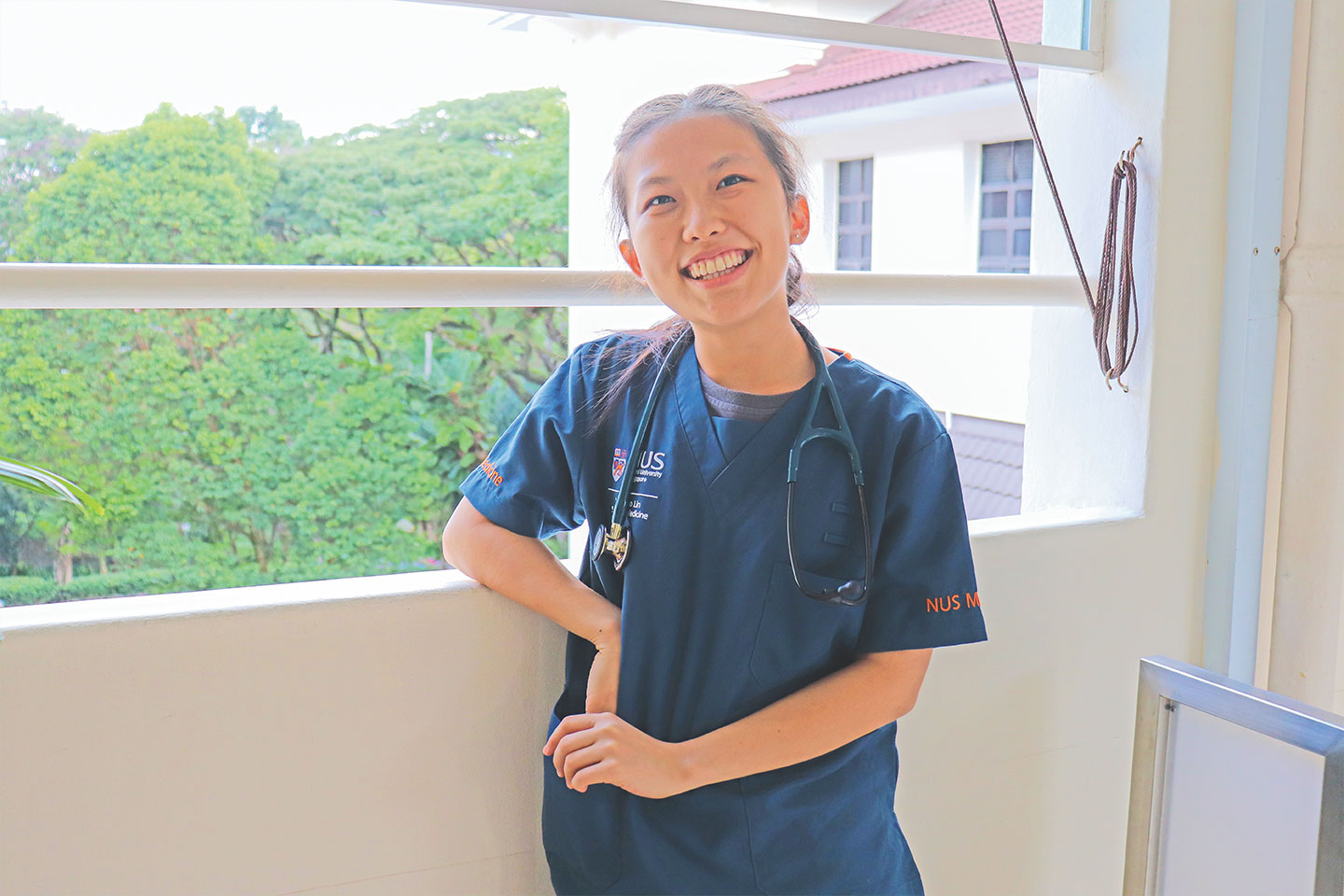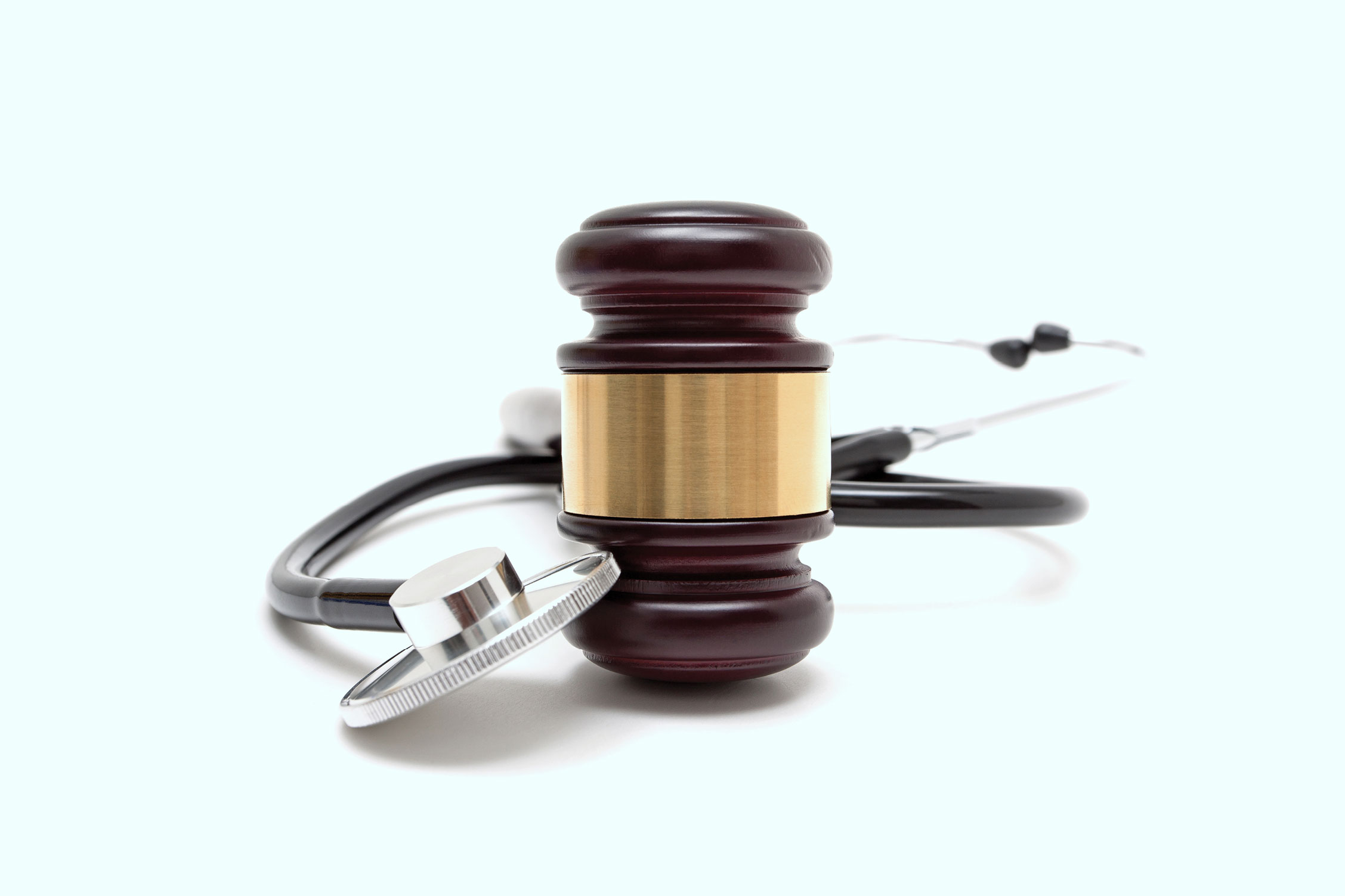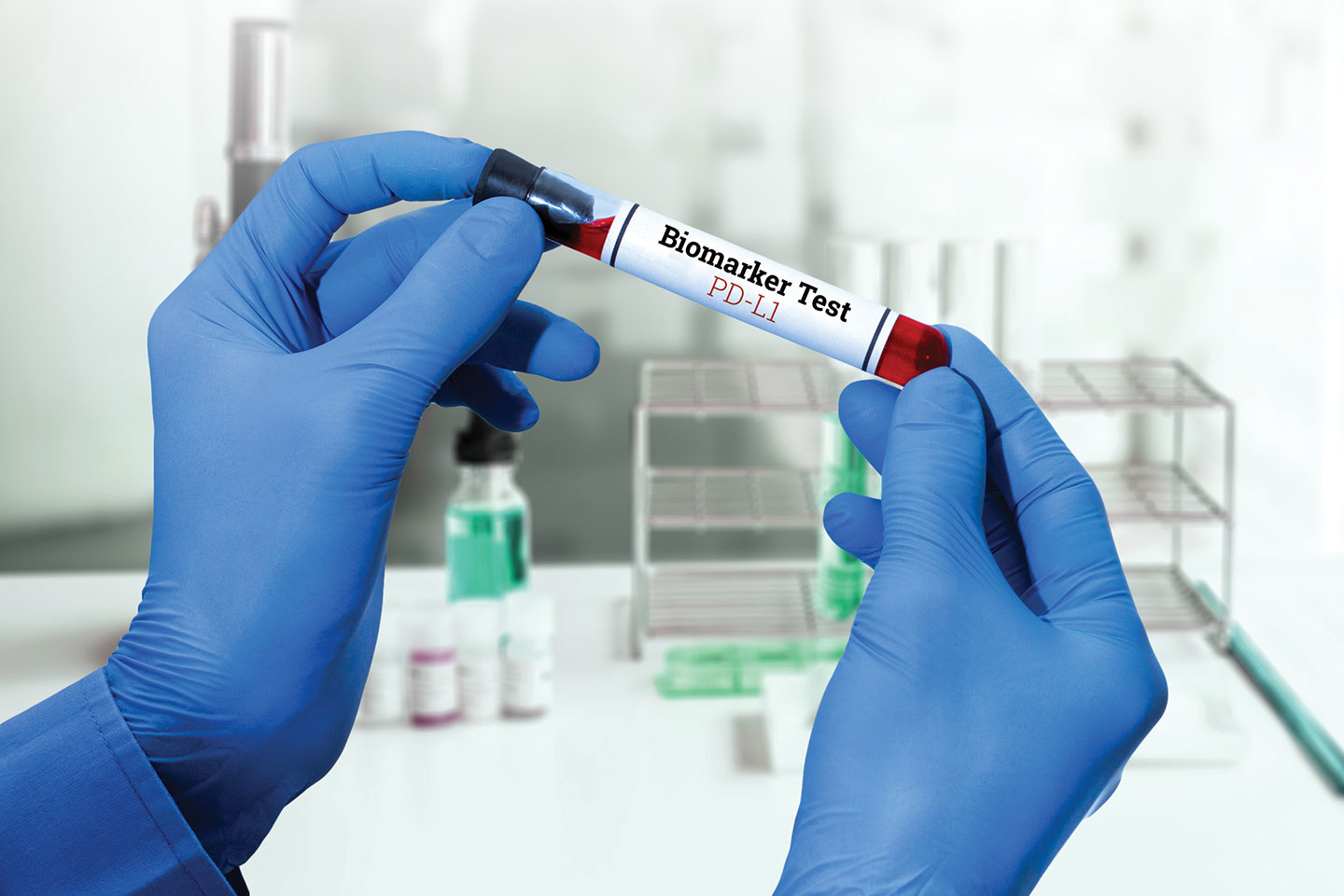
Issue 42 / May 2022
In Vivo
The Secret to Making Good Popiah—and
Drawing Blood

By Faye Ng Yu Ci, Year 4 Medicine undergraduate
Just like how a popiah hawker practises to make his dish better, practising drawing blood helps me become better at my work.
I tied the tourniquet tighter and flicked his veins with my finger, waiting for them to become more prominent. Moments passed and they remained as unremarkable as ever, that elusive run of blue underneath his variegated skin.
“Uncle, I’m so sorry. It might be painful. I’ll try to be quick.”
The paunchy uncle on the bed nodded as he put his other hand—the one that wasn’t grasped by me as if I was hanging on to for dear life—behind his head and leaned back. “I’m okay, ah girl, you do whatever you need to do.” He gave me a thumbs up.
I could tell he was feigning a cool facade for me. When I came into the cubicle with the kidney tray and blood tubes, his eyes widened as he admitted to a fear of needles. We were both anxious, but he didn’t want to make me even more so.
After a few more times of flicking his veins with my index finger, I realised the veins weren’t going to distend any further. This was the best I was going to get. I would just have to do it.
I didn’t want to tourniquet the uncle’s hand longer than I had to, depriving it of circulation.
I palpated the course of the vein again just to make sure.
“Deep breath. One, two, three.”
The bevel of the needle found the underside of the skin and pierced through. I got a streak of blood as it entered the vein, retracted the needle and advanced the cannula, a thin tube. His veins were small and hard to see, but rather miraculously, my first attempt at inserting an intravenous cannula for him was a success. An intravenous line allows fluids and medication to be run directly into the bloodstream.
“I’m done, uncle,” I reassured him as I secured the cannula with a transparent film adhesive. The man visibly relaxed as he surveyed the back of his hand, where a tiny blue “butterfly” now sat. He gave me another thumbs up.
“It’s all about practice and patience, xiao mei.
Just like you with the needle. How do you know the
vein is there? Because you got see before, right?
And you got do. Popiah-making is the same.
I just keep on making popiah and, every day,
I try to make my popiah a little better.”
“Very good, xiao mei (little sister). As you practise, will be swee swee (perfect) one.”
His eyes crinkled at me from above the blue of his surgical mask. I imagined his broad grin, the gaps between his teeth.
I blushed beneath my N95 mask, gowned in my full PPE (personal protective equipment). There was so much physical barrier between us, yet so much warmth.
It’s a blessing to meet patients like these, who are so kind and understanding.
Oftentimes, as we approach a new patient to perform a procedure, there is that hesitation. We carry the medical student’s guilt with us, stammering as we launch into our spiel.
“Hi, my name is _____, I’m a medical student. Is it okay if I take your blood for you?”
It’s almost as if I’m saying: I am a medical student and I am inexperienced. I might potentially hurt you or not do as good a job. Will you, with this knowledge and this understanding, still grant me the permission to try?
For every patient who nods his or her head, it is a grace and a privilege.
I remember the time when my mum recounted her visit to the hospital to me.
“I was having such a bad headache that day and the whole world was spinning around me. There was this young doctor who asked if she could examine me before her senior consultant came in. She spent a lot of time tilting my head around and covering and uncovering my eyes. She even lay me down on the bed to perform this unusual head-turning manoeuvre on me.”
“In the past, I wouldn’t have agreed. I was already so dizzy…”
“But then I thought about you in medical school… I thought about you in the hospitals with the patients, how clumsy you always are at home, and how they would still let you do all sorts of crazy things on them. And I told the trainee to go ahead.”
My mum gave me the side eye and I hugged her. I knew this was her way of saying she loved me. It was also a not-so-subtle hint to be more adroit and organised with the housework.
After setting the plug for the uncle, I went back to take his medical history.
He had arrived at the hospital’s Emergency Department in the early morning with acute onset shortness of breath, which he was worried might be another asthma exacerbation.
He had been hospitalised multiple times for recurrent pneumonia, on a background of asthma-chronic obstructive pulmonary disease (COPD) overlap syndrome. This was a disease characterised by persistent airflow limitation, with mixed features of both asthma and COPD.
Besides his condition, we also spoke about his life as a hawker.
The uncle sold popiah with his wife in one of the food centres in the heartland. He beamed with pride when he shared that his popiah stall was famous, being frequented by ministers and celebrities from time to time. His customers came from all walks of life.
He whipped out his phone and scrolled through the photo gallery, tapping open an old photo taken in front of his stall with the then defence minister.
“Come, take down my stall name. Please drop by if you happen to be around the estate. Bring your family to eat my popiah.”
Amused and revivified by the uncle’s enthusiasm, I scrawled down the stall’s address, promising to visit if I was in the vicinity.
As he showed me more pictures of his popiah – braised turnip, peanut bits and crab meat ensconced in translucent, paper-thin rice wraps – I asked him: “What makes a good popiah? Or what do you think makes your popiah so great?”
“Practice,” he said decisively. “You practise until you make the perfect popiah.”
“I spent 10 years figuring out how to whip up the perfect popiah: which type of rice wrap to use, how much liao (ingredients) to put and how to pack everything in perfectly. I spent another 10 years experimenting with the sweet bean paste, honing my intuition for the flavour and taste,” he explained.
“It’s all about practice and patience, xiao mei. Just like you with the needle. How do you know the vein is there? Because you got see before, right? And you got do.”
“Popiah-making is the same. I just keep on making popiah and, every day, I try to make my popiah a little better.”
I improved on my plug setting and gained some popiah-making insights that afternoon.
I thank all the patients I have had and learnt from. You give me the chance to grow into the doctor I hope to become one day.
This article was first published in The Straits Times, 16 November 2021, and has been edited for MediCine.




